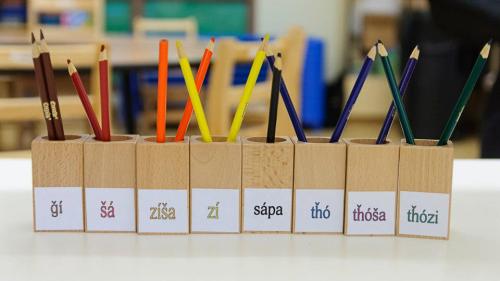Elaina Albers Is My Niece
Bringing Our Languages Home: Language Revitalization for Families is a book Edited and with a How-to Guide for Parents by Leanne Hinton (ILI/CILO partner).
Throughout the world individuals in the intimacy of their homes innovate,improvise, and struggle daily to pass on endangered languages to their children. Elaina Albers of Northern California holds a tape recorder up to her womb so her baby can hear old songs in Karuk. The Baldwin family of Montana put labels all over their house marked with the Miami words for common objects and activities, to keep the vocabulary present and fresh. In Massachusetts, at the birth of their first daughter, Jesse Little Doe Baird and her husband convince the obstetrician and nurses to remain silent so that the first words their baby hears in this world are Wampanoag. Thirteen autobiographical accounts of language revitalization, ranging from Irish Gaelic to Mohawk, Kawaiisu to Maori, are brought together by Leanne Hinton, professor emerita of linguistics at UC Berkeley, who for decades has been leading efforts to preserve the rich linguistic heritage of the world. Those seeking to save their language will find unique instruction in these pages; everyone who admires the human spirit will find abundant inspiration.Languages featured: Anishinaabemowin, Hawaiian, Irish, Karuk, Kawaiisu, Kypriaka., Maori, Miami, Mohawk, Scottish Gaelic, Wampanoag, Warlpiri and Yuchi. About the EditorLeanne Hinton is professor emerita at the University of California, Berkeley, and a founding
member of the board of the Advocates for Indigenous California Language Survival. She has
authored many articles and several books on language revitalization, including Flutes of Fire: Essays on California Indian Languages; The Green Book of Language Revitalization in Practice (edited with Ken Hale); and How to Keep Your Language Alive: A Guide to One-on-One Language (with Matt Vera and Nancy Steele). She has worked with AICLS to develop and implement the Master-Apprentice Language Learning Program and the Breath of Life Language Workshops, both of which have expanded throughout the US and internationally. In 2005 she received the Cultural Freedom Award from the Lannan Foundation for her work on the revitalization of endangered languages. Leanne lives in Berkeley, California, with her husband, Gary Scott, and delights in family time with their four children and eight grandchildren. Order information
Bringing Our Languages Home is available through bookstores, major book distributors including Ingram, Baker and Taylor, and other distribution centers, or by contacting Heyday directly at (510) 549-3564, ext. 304, via fax at (510) 549-1889, by email at orders@heydaybooks.com,
or by visiting our website at www.heydaybooks.com.
To sponsor a reading or event
Please email your request with detailed information about your bookstore or organization to
events@heydaybooks.com, or call (510) 549-3564, ext. 316. Trade paper • 6 x 9 • 256 pages
$20.00
ISBN: 978-1-59714-200-7

